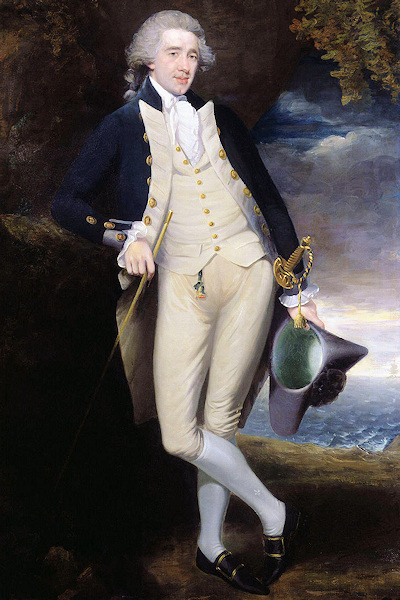Sea Fencibles
The Sea Fencibles were a British naval militia, mostly volunteers, that was formed in 1793 to act as an anti-invasion force in coastal waters. The Sea Fencibles were active during the French Revolutionary Wars (1792–1802) and Napoleonic Wars (1803–1815). They were usually fishermen or local residents along the coast, under the command of retired or serving naval officers.
Introduction
The Sea Fencibles were naval fencible (a shortening of defensible) units established to provide a close-in line of defence and obstruct the operation of enemy shipping, principally during the French Revolutionary and Napoleonic Wars.
The earliest recorded use of the term was in 1793, when Royal Navy captain Sir Home Popham organised groups of fishermen to guard against French vessels off the coast of Nieuwpoort, Belgium. At Popham's suggestion, the British Admiralty subsequently authorised the formation of co-ordinated Sea Fencible units along the English and Irish coasts.
From 1804 on they were supported by a network of Martello towers. Popham's Sea Fencible companies consisted of merchant seamen using their own private or commercial vessels, but operating under letters of marque that authorised them to capture enemy ships should the opportunity arise. The Navy provided the Fencibles with uniforms and weapons; it also protected them from the depredations of navy press gangs.
The British Admiralty disbanded its Sea Fencible units in 1810 when it became clear that the threat of invasion by Bonaparte had passed.
More About the Sea Fencibles

Sir Home Popham, the originator of the
"Sea Fencibles" concept in 1793.
The Sea Fencibles were divided into 36 companies, with each company responsible for patrolling and defending a section of the coastline. Company command was vested in three Royal Navy captains and up to six Lieutenants per district. The district captains reported in turn to the Director of Sea Fencibles, an admiral.
Sea Fencible volunteers were trained in the use of arms and were required to man watch and signal towers, and fixed and floating batteries along the coasts and ports. Those who operated commercial vessels, for example, local fishermen, received up to four cannons per craft and training in their maintenance and use.
The Admiralty commissioned a small number of armed vessels for use in districts where there was insufficient private craft to meet a Sea Fencible company's needs. A member of the Sea Fencibles would spend one day a week training. All Sea Fencibles received a certificate that exempted them from impressment into the Navy. The Treasury argued that the exemption from impressment was the principal reason smugglers joined as impressment was a common punishment for smuggling.
The Sea Fencibles operated in accordance with letters of marque authorising the capture of French or Spanish merchant shipping and a share of the proceeds should the seized vessel then be sold. Their fleet consisted of small vessels such as colliers and coasting vessels such as hoys adapted to serve as gunboats. The owners were expected to pay for the fitting of slides, ring and eye bolts for the installation of guns, usually two forward and two aft, and in smaller craft to fit sweeps for use in calms.
The Admiralty provided guns, ammunition and powder, and it required the ship owners to keep close and regular accounts of their use. The owners were under orders to co-operate with the Royal Navy, and they were entitled to payment of compensation, according to the size of their ships and the amount of time they were required.
Recruitment
Sea Fencibles recruitment was brisk with 23,500 volunteers in the first four years. Officer recruitment also proceeded swiftly, particularly among younger captains who lacked the seniority for an ocean-going command. By 1803, one-third of Sea Fencibles captains were men promoted to that rank within the preceding twelve months. Sea Fencibles command also offered the prospect of relatively easy service on full pay. For this reason, it was appealed to a group of older captains whose Navy careers were near their natural end. The oldest captain, Sir Edmund Nagle, had served at sea for more than three decades before taking command of the Sea Fencibles at Shoreham-by-Sea in 1803.
Home Popham himself was appointed to head up the district between Beachy Head and Deal, the area considered at greatest risk of a French invasion. Another Sea Fencible was Francis Austen, a naval captain and future admiral who was the brother of the novelist Jane Austen. He was appointed to raise and organise a corps of Sea Fencibles to defend a strip of the Kentish coast.
Text courtesy of Wikipedia

A Typical Sea Fencible




